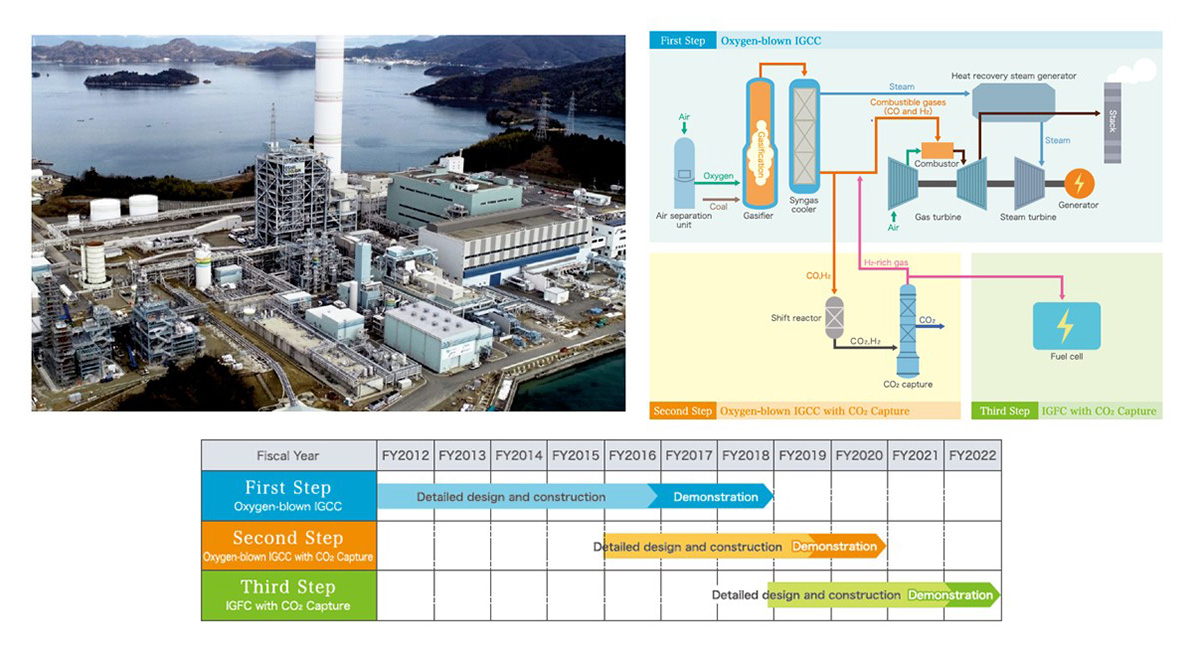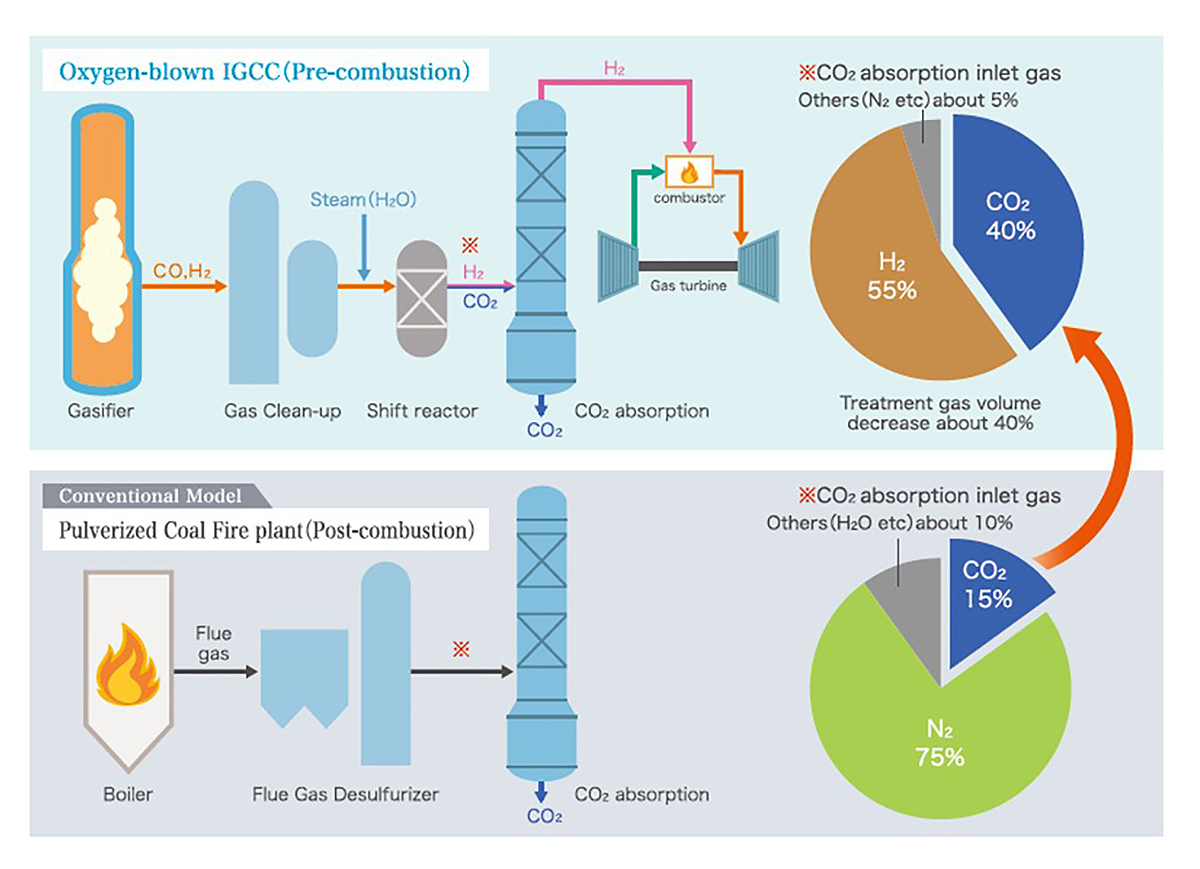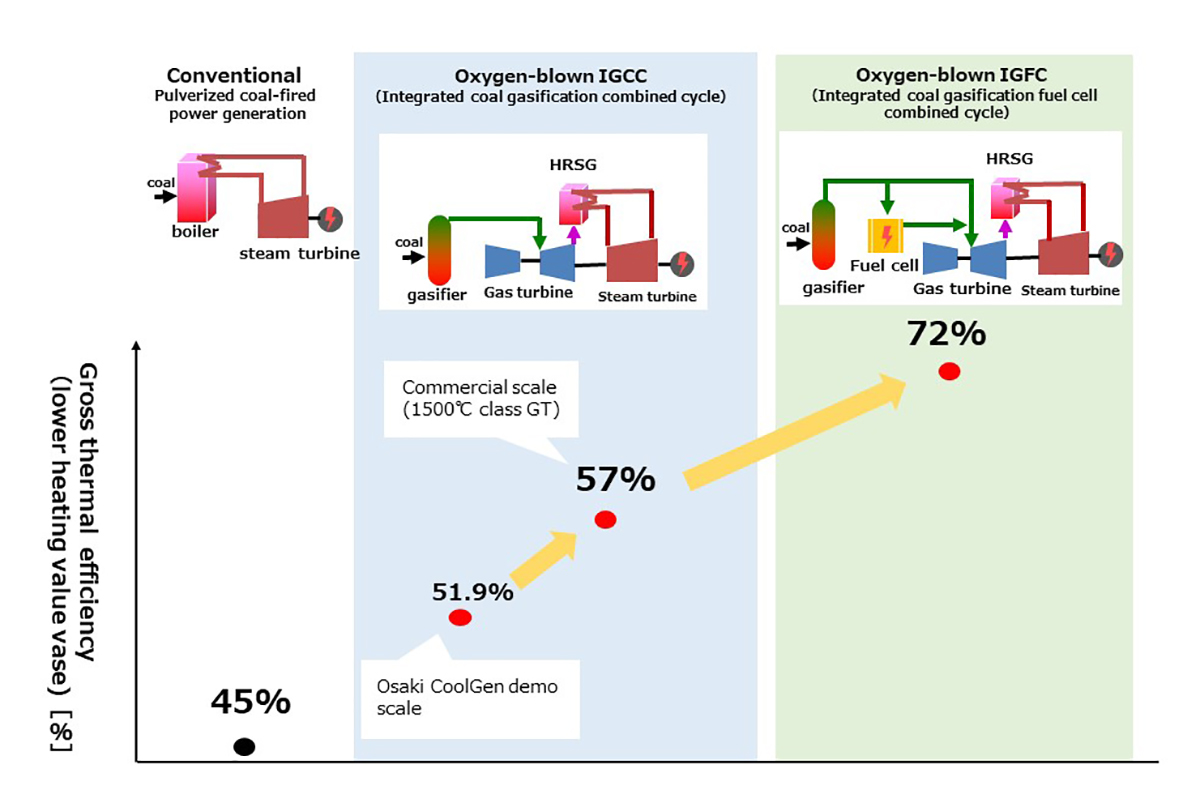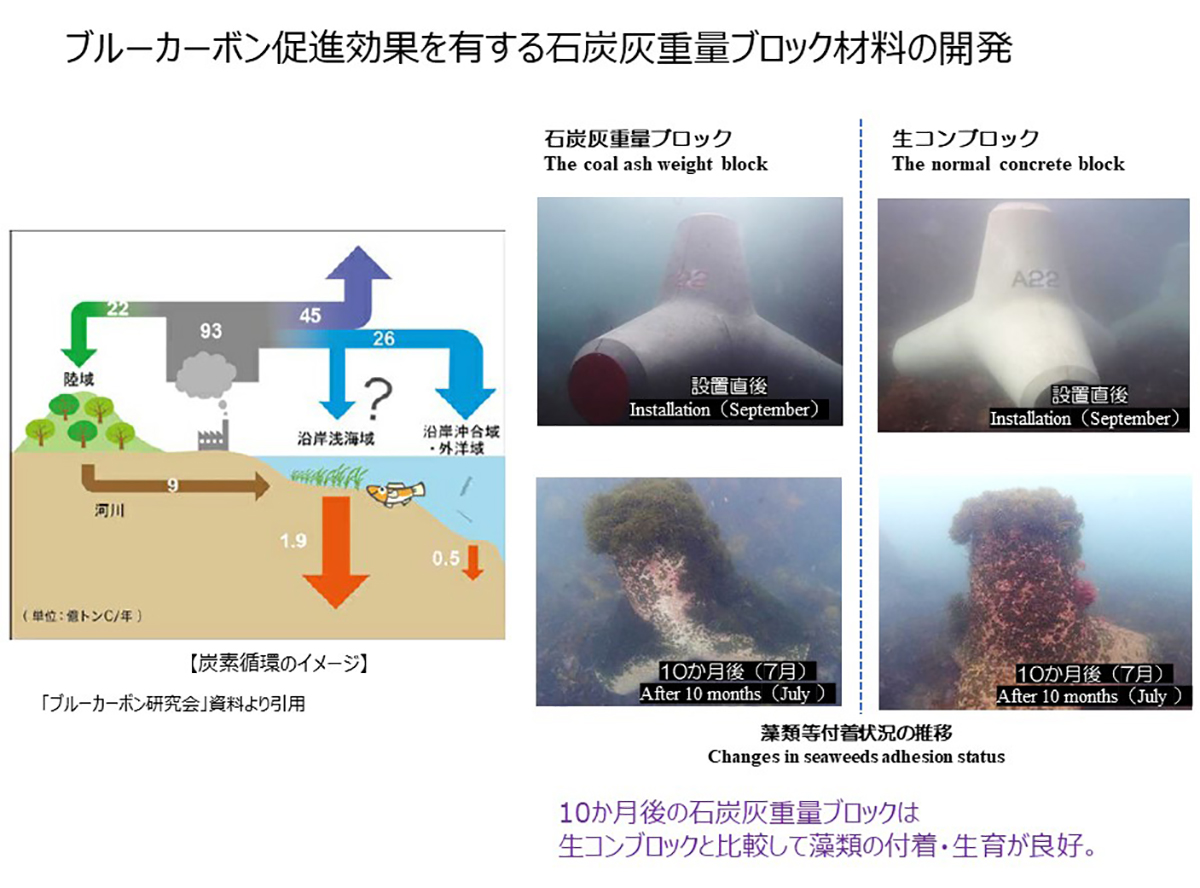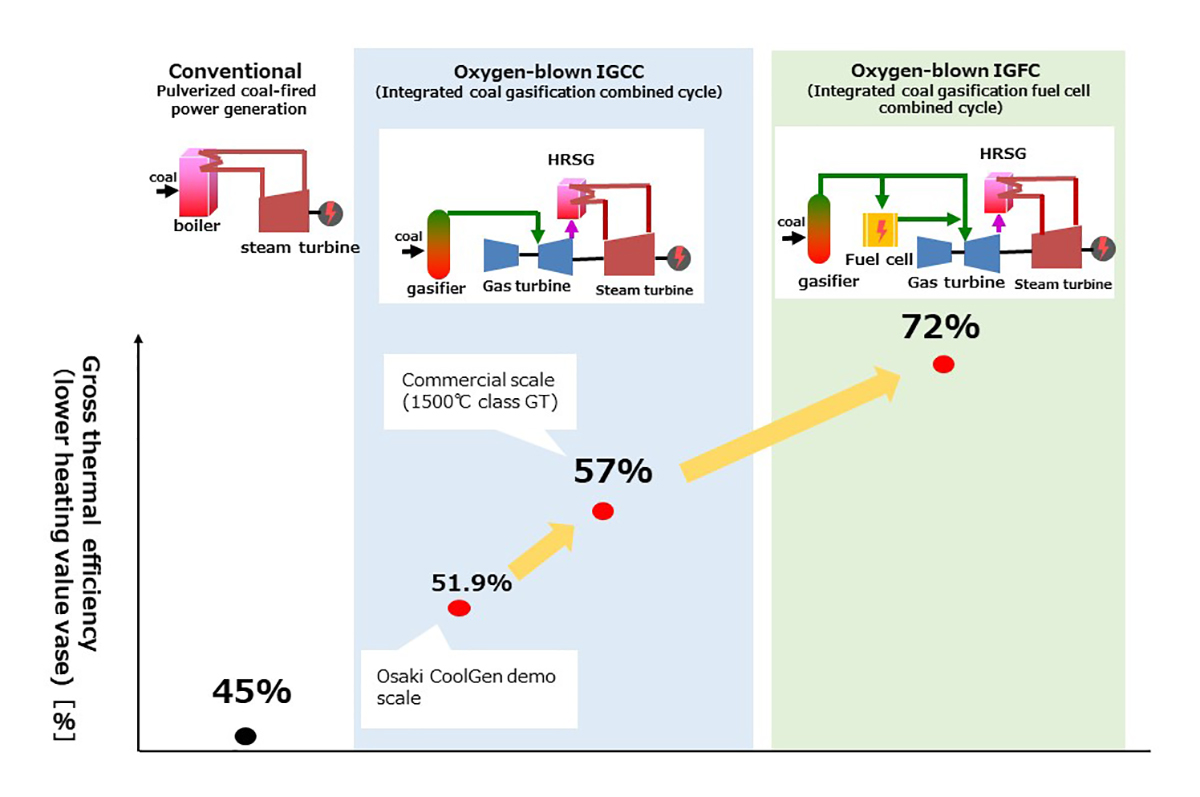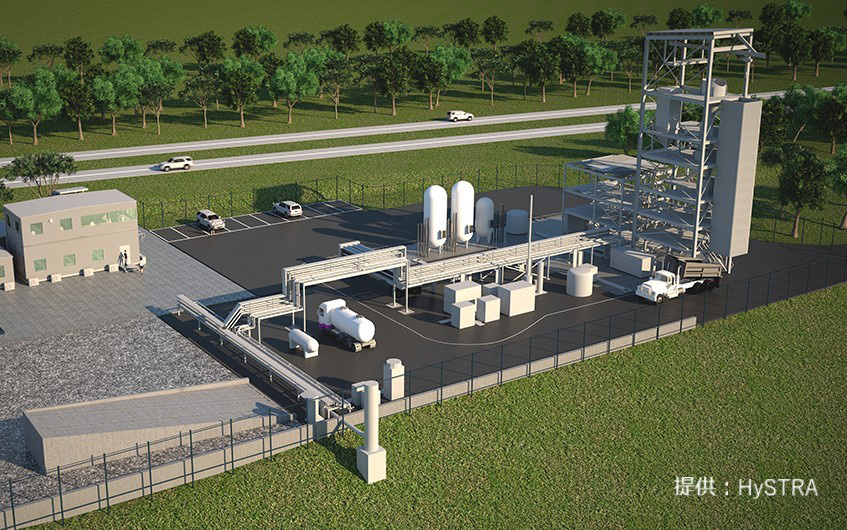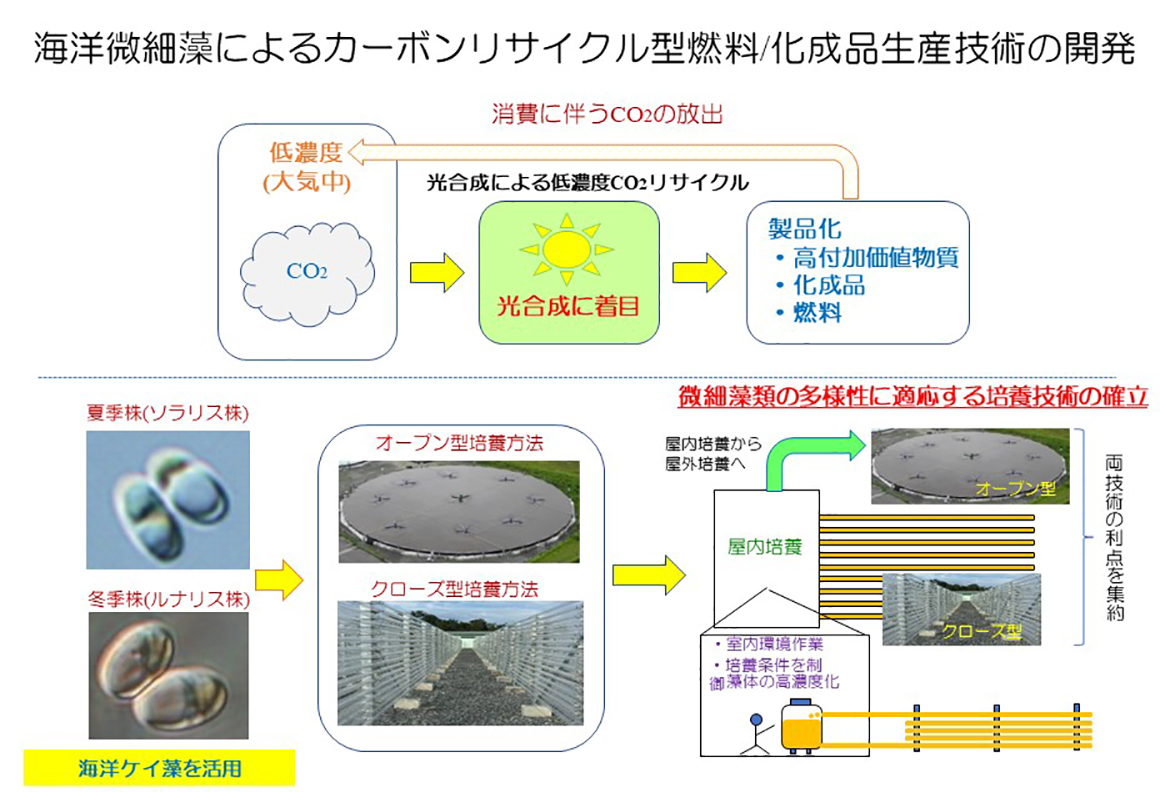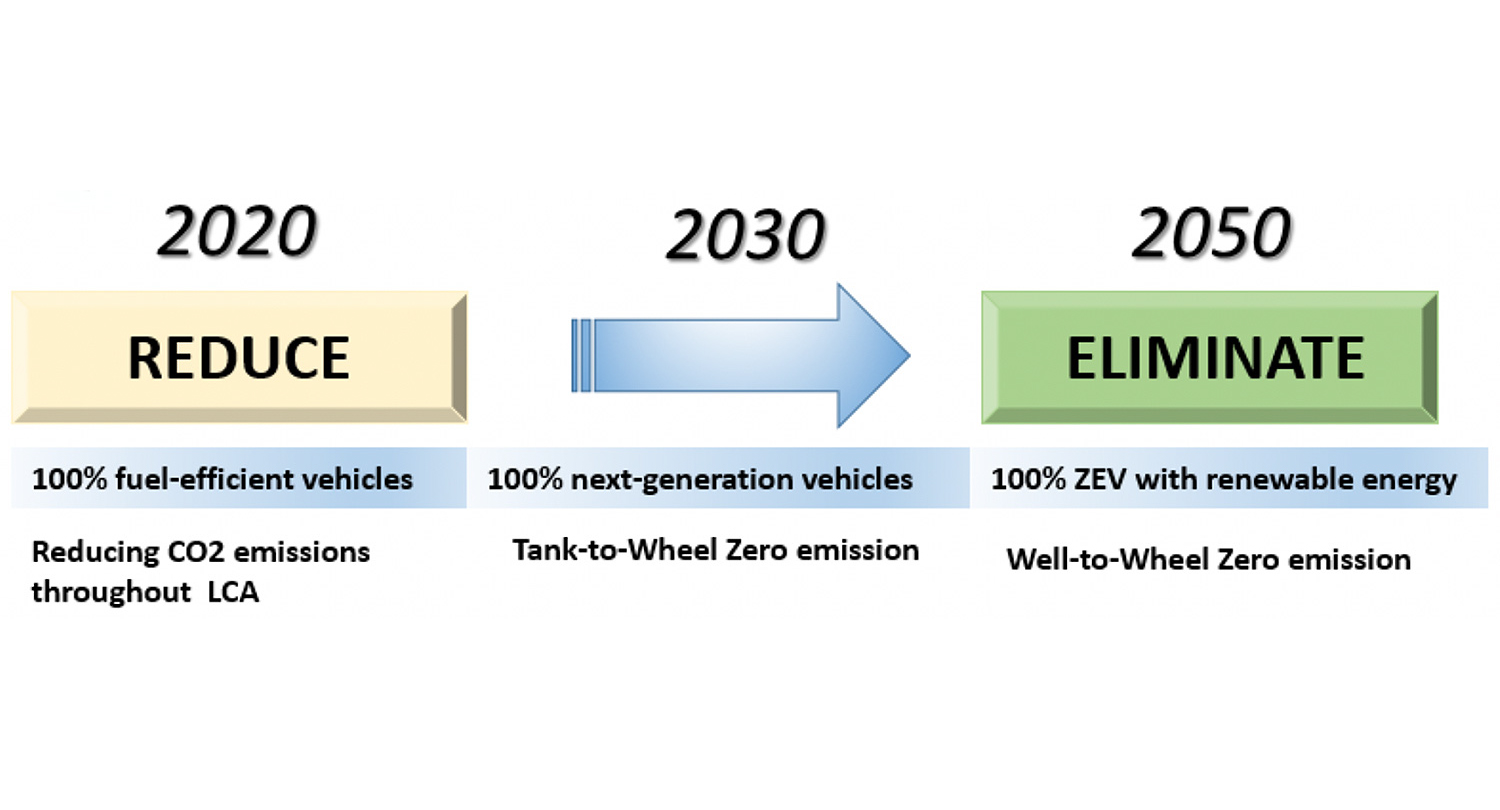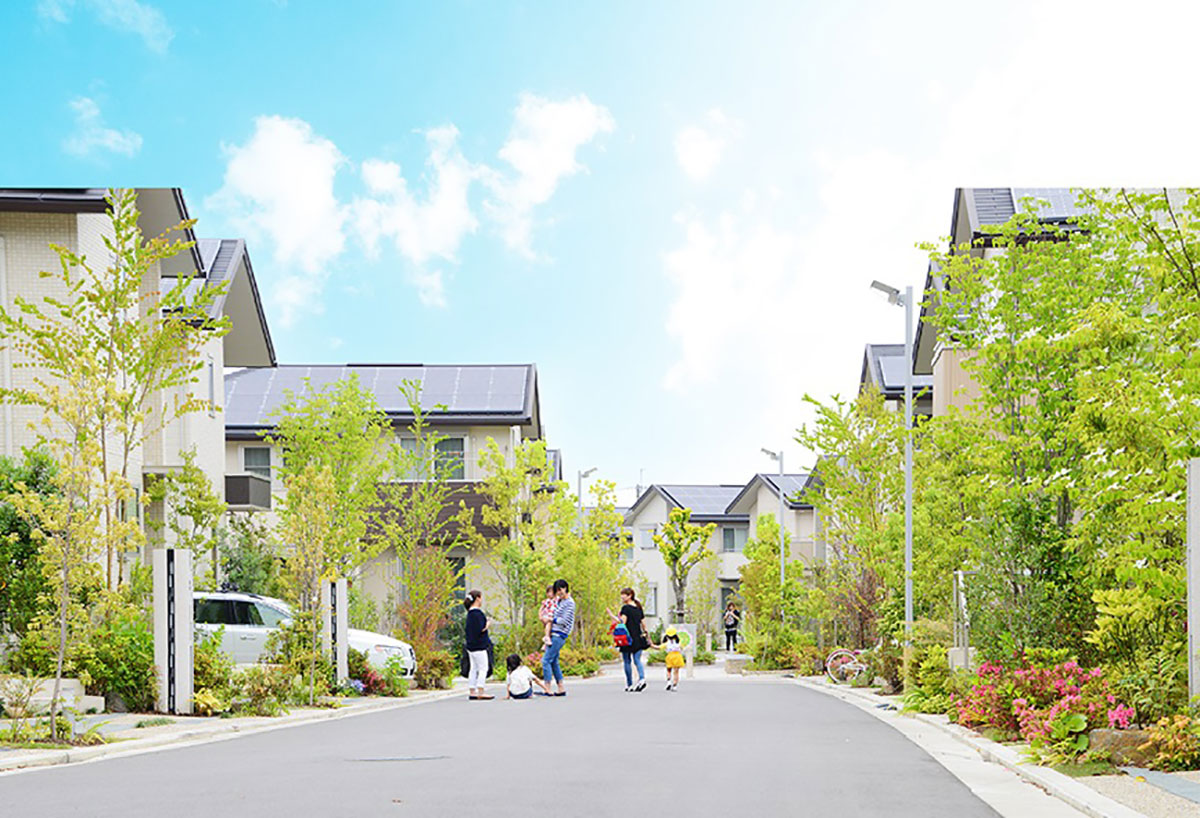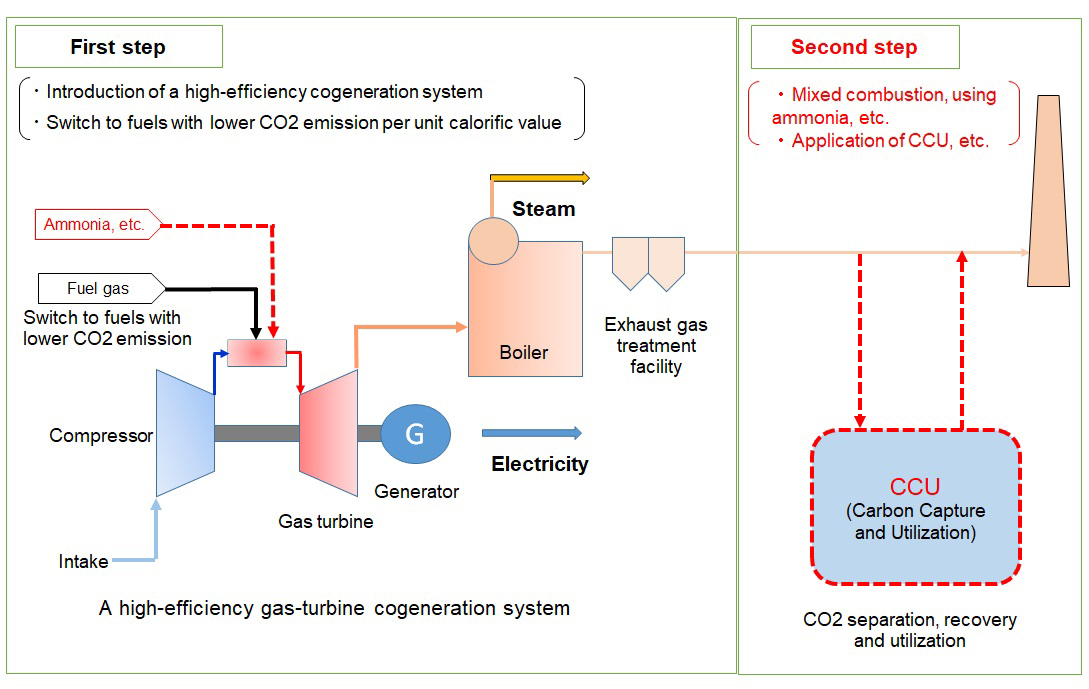Realization of next-gen thermal power plants (oxygen-blown IGCC) suitable for CO2 capture
Electric Power Development Co.,Ltd.
Outline
The use of renewable energy has been expanding globally, but it is impossible to satisfy all power needs with renewable energy and nuclear power. To meet the future needs for coal in Japan and abroad, we believe that decarbonization in coal use is critical.
An integrated coal gasification combined cycle (IGCC) system is expected to contribute to the reduction of CO2 emissions as it is highly efficient with gross thermal efficiency of 57% (LHV basis). The system generates power by combining two turbines: a gas turbine that burns gasified coal and a steam turbine driven by the steam generated from the exhaust gas of the gas turbine. In particular, an oxygen-blown IGCC that uses oxygen to produce gas from coal is a suitable power generation technology for the carbon dioxide capture, utilization, and storage (CCUS) as it produces gas that contains a higher level of carbon monoxide (CO), allowing the efficient capture of CO2.
We aim to accelerate the carbon reduction and decarbonization of coal-fired power plants by promoting the commercialization of oxygen-blown IGCC systems using the insights from the Osaki CoolGen Project, a demonstration project of an oxygen-blown IGCC and IGFC.
Description
We carried out the EAGLE (Coal Energy Application for Gas, Liquid & Electricity) Project at our Wakamatsu Research Institute since FY2002 as a joint research project with the New Energy and Industrial Technology Development Organization (NEDO), a national research and development agency. The objective of this project was to establish technologies for realizing an oxygen-blown IGCC system.
Employing insights and results gained from the EAGLE Project, we have been pursuing the Osaki CoolGen Project with the Chugoku Electric Power Co., Inc. using the financial aid from NEDO. The first phase of this project, a demonstration test of an oxygen-blown IGCC system (166 MW capacity, with a coal consumption volume of 1,180 tonne per day), was completed in February 2019. In the second phase, started in December 2019, we are running a demonstration test of an IGCC system with a CO2 capture capability (oxygen-blown IGCC demonstration facility plus a CO2 capture unit). Then in the third phase, started in March 2019, we initiated a demonstration project of an IGFC system with a CO2 capture capability.
An oxygen-blown IGCC is expected to contribute to the reduction of CO2 emissions as it is highly efficient with gross thermal efficiency of 57% (LHV basis). The system generates power by combining two turbines: a gas turbine that burns gasified coal and a steam turbine driven by the exhaust gas from the gas turbine. An oxygen-blown IGCC that uses oxygen to produce gas from coal is a perfect power generation technology for CCUS as it produces gas that contains a higher level of carbon monoxide (CO), allowing the efficient capture of CO2. As an oxygen-blown coal gasification furnace can efficiently produce hydrogen from coal, the IGCC is expected to contribute to the realization of the Hydrogen-based society as well.
In the first phase of the Osaki CoolGen Project, a demonstration test of an oxygen-blown IGCC, we achieved the gross thermal efficiency of 51.9% (LHV basis)*1, which is among the best in the demonstration plants with170 MW capacity across the world. Based on this success, we now have the prospect of achieving the gross thermal efficiency of approx. 57% (LHV basis)*2 in a new commercial plant with 1,500 deg C class gas turbines (coal processing capacity of 2,000-3,000t/day). This will reduce CO2 emissions by approximately 15% compared with ultra-supercritical (USC) pulverized coal power plants.
In addition, on the plant controllability and operability front, we achieved the load change rate of up to 16% per minute, far exceeding the target. We also confirmed that the plant is operated stably with net output at 0MW, enabling the timely adjustment of output. These findings demonstrated the high operability of an oxygen-blown IGCC, and its potential as an energy source that can respond to the sharp changes in the output of renewable energy sources that are rapidly expanding.
The second phase of the project aims to verify the basic performance, plant operability and reliability, and economy of an oxygen-blown IGCC system with a CO2 capture capability (oxygen-blown IGCC demonstration facility plus a CO2 capture unit) as a coal-fired power generation system. On the issue of a reduced power generation efficiency due to the energy loss during the CO2 capture, we aim to obtain a prospect of achieving a net thermal efficiency equivalent to that of the latest pulverized coal-fired power plants, while capturing 90% of CO2 of the whole amount of the gasified gas in the newly-built commercial IGCC plant (1,500 deg C class IGCC).
We are also considering to conduct Japan’s first demonstration project for carbon recycling that uses CO2 captured from coal-fired power plants for a variety of purposes. Specifically, we are considering to liquefy and transport CO2 captured in the second phase to effectively use for various purposes (e.g., tomato farms in Kitakyushu city co-operated with Kagome Inc., research to produce biomass fuel from microalgae, environment-friendly concrete developed by Chugoku Electric Power, etc.).
Based on the achievement of the Osaki CoolGen Project, we aim to accelerate the decarbonization of coal-fired power plants by realizing the commercialization of an oxygen-blown IGCC system that can improve the power generation efficiency by scaling up plants, reducing CO2 emissions from coal-fired power plants, and adopting the CCUS and carbon recycling technologies.
*1 the net thermal efficiency of 40.8% (HHV basis)
*2 the net thermal efficiency of approx. 46% (HHV basis)
Partner(s)
New Energy and Industrial Technology Development Organization (NEDO)
The Chugoku Electric Power Company, Inc.
OSAKI CoolGen Corporation
Hitachi, Ltd.
Supplementary information
OSAKI CoolGen Corporation HP
https://www.osaki-coolgen.jp/en/
Other Innovation Challenges
Development of coal ash weight blocks with the effect of blue carbon
Electric Power Development Co.,Ltd.
Development of highest-efficiency next-gen thermal power plants (oxygen-blown IGFC)
Electric Power Development Co.,Ltd.
Production of CO2-free hydrogen by brown coal gasification
Electric Power Development Co.,Ltd.
Production of fuels and chemicals from marine microalgae using carbon recycling
Electric Power Development Co.,Ltd.
Similar Innovation Challenges
Achieve 2050 decarbonization target with Net Zero Energy House!
Sekisui House, Ltd.
Achieving net-zero emissions by promoting renewable energy use through both our monozukuri and products.
DAIWA HOUSE INDUSTRY CO., LTD.



